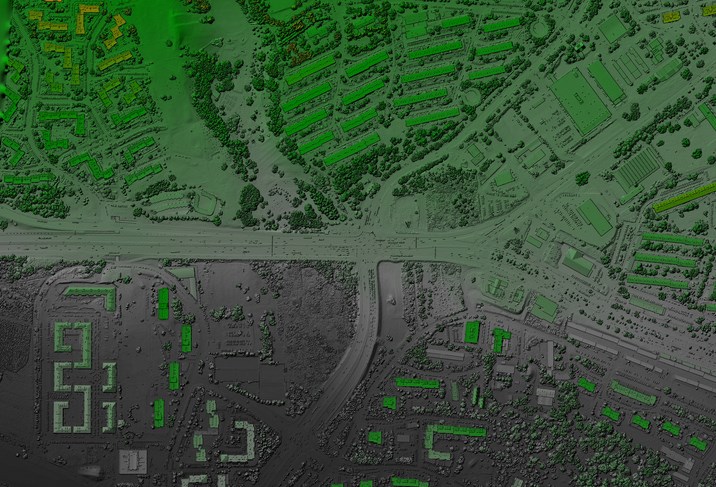PRINCE ALBERT - Sask Polytech, which has a campus in Prince Albert, recently added a new, state-of-the-art remotely piloted aircraft system (RPAS) to their fleet.
The new RPAS carries specialized sensing and mapping technology used for applied research and training in the forestry, mining and agricultural sectors. Sask Polytech’s School of Natural Resources and Built Environment now has eight remotely piloted aircraft systems.
David Halstead research chair for the School of Natural Resources and Built Environment, said the RPAS equipment has a wide variety of uses that will help researchers in the north.
“Both the camera and the LiDAR (light detection and ranging), can be used for all kinds of applications particularly on mapping and surveying and generating what is called digital elevation models, so 3D topography,” said Halstead, who is based out of Prince Albert.
“Sask Polytech has the in-house capacity to conduct experiential development, business validation, and technology adoption and provides the resources industry needs to innovate,” added Susan Blum, associate vice-president, Applied Research and Innovation. “This new RPAS with cutting edge light detection and ranging(LiDAR)and 42 MP camera mapping payloads will assist our research partners in forestry, mining and agriculture.”
The RPAS is an advanced drone, with rotors that can tilt upward to lift the drone vertically. Once airborne, the RPAS can tilt its rotors forward and fly in a fixed-wing format. It has a long flight range and can fly for almost an hour, enabling it to capture and survey large swaths of land.
“This technology we recently acquired kind of blows the doors off anything we had previously,” Halstead said. “It has tremendous flight time, (and) flight capabilities.”
The RPAS offers a 100 kilometre flight range and seven kilometres of both land and control range, and radio contact. It rarely reaches the 100 kilometre flight range limit since operators want to be able to observe it, but Halstead said they like the flexibility.
“It really opens the door to leading edge technology,” he explained. “It’s going to really supercharge the education that our students get both in geographical information science, which is one of our natural resource programs, and in integrated resource management, which is another in our NRT programs. Then, thirdly, we have a conservation law and it could find application there as well. All of these areas are going to benefit tremendously in terms of training.”
Mapping with drones is an important aspect of the RPAS, but not the only one. The new sensing and mapping technology included will also significantly upgrade Sask Polytech’s LiDAR capacity.
LiDAR is an optical remote-sensing technique that uses laser light to densely sample the surface of the earth, producing highly accurate measurements. It is a cost-effective alternative to traditional surveying techniques and produces massive point cloud datasets that can be managed, visualized, analyzed and shared using a geographical information system.
According to Halstead, the RPAS is a vast improvement in precision and accuracy, and the new LiDAR system is a significant upgrade on the one that they have had since 2015 in that it is smaller and more precise and accurate.
“It's kind of like sonar would be in the water,” Halstead explained. “LiDar uses light to detect objects on land and we know the speed of light so as soon as it comes back to us we can precisely determine where that object is. This LiDAR is generating 250,000 points per second and it can record at least three of those every second, so it's very precise data on what is in and around us.”
The new RPAS was recently used to generate a digital elevation model of a research project site at Discovery Farm Langham, the home of Ag in Motion near Langham, Saskatchewan. They also used it part of a mission at the Conservation Learning Centre just south of Prince Albert.
“We just wanted to get a sense as to the accuracy of the camera and that sort of thing,” Halstead said.
The work in Langham was performed for Blake Weiseth, Applied Research lead for the Discovery Farm and agriculture research chair with Sask Polytech, to provide a detailed map of landscape topography and water drainage characteristics.
"This specialized technology helps us to understand small changes in elevation and typography at an incredibly high resolution,” Weiseth said. “Access to this information helps us understand how current farming practices can be used to optimize water and fertilizer use efficiency across the field.”
Sask Polytech’s applied research partners have access to facilities, faculty expertise, funding for research and development, and a wide network of connections. Those partnerships allow companies to solve everyday problems, create jobs and help grow Saskatchewan’s economy.
Halstead said researchers partner with small and medium sized business in the Prince Albert region, and these businesses can access the technology to assist with their growth and development.
“They often have questions that only this kind of technology can answer,” he explained. “That is where we come into play with a practical solution and practical technology to help answer their questions.
“The thing to remember is that when we are doing that research to help benefit businesses, we are often involving student researchers (and) in that research so they are allowed to explore the unknown. They are allowed to take that data and really work with it and try new things, so everyone really benefits from this kind of technology.”





